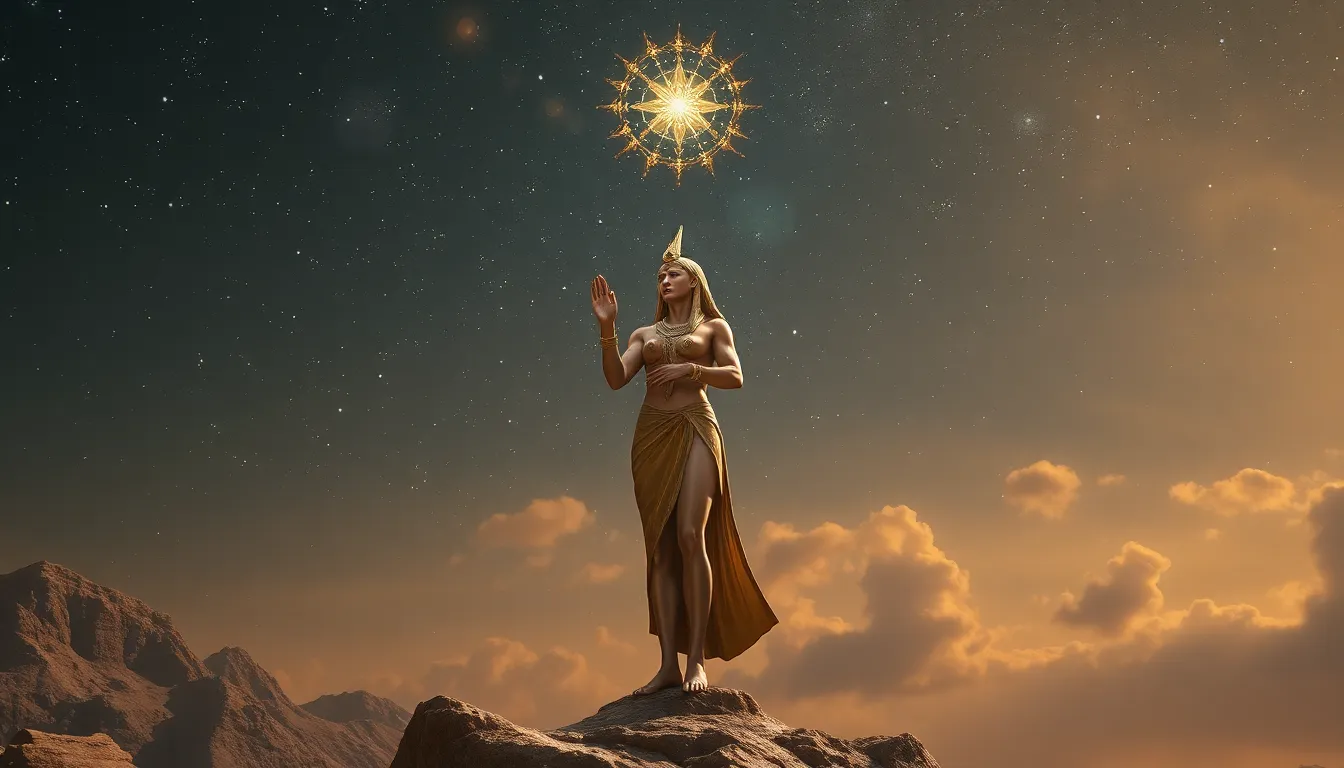The Myth of Nut: Goddess of the Sky and Her Starry Embrace
I. Introduction
In the rich tapestry of ancient Egyptian mythology, few deities hold as significant a place as Nut, the goddess of the sky. Nut embodies the celestial realm, representing the overarching canopy that encloses the earth and cradles the stars. Through her immense presence, Nut not only symbolizes the sky but also plays a crucial role in the ancient Egyptians’ understanding of the cosmos. This article aims to explore the myths and symbolism surrounding Nut, revealing her importance in both mythology and culture.
II. Historical Context of Nut in Egyptian Mythology
Nut’s origins trace back to the early periods of Egyptian mythology, where she is recognized as one of the primordial deities. She is part of the Heliopolitan cosmology, often depicted as the daughter of the sky god, Shu, and the earth goddess, Tefnut. Nut’s relationship with other deities is profound:
- Geb: Nut’s brother and husband, representing the earth.
- Ra: The sun god, who travels across Nut’s body during the day.
The sky held immense cultural significance in ancient Egypt, seen as a divine realm that connected the living with the afterlife. The Egyptians believed that the sky was a protective barrier, safeguarding the earth and its inhabitants.
III. The Mythological Narrative of Nut
The mythological narrative of Nut is rich with themes of love and transformation. According to Egyptian mythology, Nut was born from the primordial waters of Nun, and her celestial role was established early on. One of the most famous tales is that of Nut’s forbidden love with her brother Geb. Despite their deep bond, the other gods disapproved of their union, leading to a series of dramatic events.
In a desperate attempt to keep them apart, the sky god Shu separated Nut and Geb, lifting Nut high above, where she became the sky itself, arching protectively over the earth. This transformation symbolizes her eternal embrace of Geb, as she stretches over him, with her body adorned with stars and constellations.
IV. Symbolism and Iconography of Nut
Nut’s portrayal in ancient art and artifacts is both striking and evocative. She is often depicted as a woman arched over the earth, her body covered in stars. Her imagery conveys several symbolic meanings:
- Stars: Nut is often associated with the night sky, and the stars are seen as her children, representing the souls of the deceased.
- The Milky Way: In some interpretations, the Milky Way is viewed as Nut’s body, emphasizing her connection to the cosmos.
- Motherhood: As a nurturing figure, Nut embodies protection and the cycle of life, symbolizing the womb of the universe.
V. Nut’s Influence on Ancient Egyptian Cosmology
Nut plays a pivotal role in the Egyptian creation myth, where she is often linked to the cycle of life and death. Her embrace is seen as a protective force, guiding souls to the afterlife. The mythology surrounding Nut reflects broader themes in Egyptian cosmology:
- Creation: Nut gives birth to the sun each morning, representing rebirth and regeneration.
- Afterlife: Nut’s protective embrace is believed to safeguard the souls of the deceased as they journey through the afterlife.
- Balance: The interaction between Nut and Geb illustrates the balance between the sky and earth, life and death, male and female.
VI. Nut in Modern Interpretations and Popular Culture
In recent years, there has been a resurgence of interest in ancient Egyptian mythology, with Nut being a focal point in various forms of literature, art, and media. Her portrayal continues to captivate audiences, reflecting her timeless appeal:
- Literature: Contemporary novels and stories often draw upon Nut’s narrative, highlighting themes of cosmic love and protection.
- Art: Modern artists incorporate Nut’s imagery into their works, celebrating her celestial beauty and significance.
- Spiritual Practices: Some contemporary spiritual practices reference Nut as a symbol of motherhood, nurturing, and cosmic connection.
VII. The Legacy of Nut: Lessons from the Goddess of the Sky
Nut’s enduring legacy offers valuable lessons about love, protection, and the cosmos. Her myth resonates with themes that can inspire modern interpretations of femininity and strength:
- Empowerment: Nut’s story embodies the strength of female figures in mythology, emphasizing the importance of love and resilience.
- Connection to the Cosmos: Her relationship with the stars encourages a sense of wonder and curiosity about the universe.
- Timelessness: Nut’s narrative reflects universal themes that remain relevant in today’s discussions about mythology and culture.
VIII. Conclusion
Nut stands as a powerful symbol in ancient Egyptian mythology, representing the sky and the nurturing embrace of the cosmos. Her story highlights the interconnectedness of life, love, and the universe. As we reflect on Nut’s significance, we recognize the timeless nature of her narrative and its relevance to contemporary discussions about mythology, culture, and femininity. We encourage further exploration of ancient myths, as they continue to offer profound insights into our understanding of the world and ourselves.




